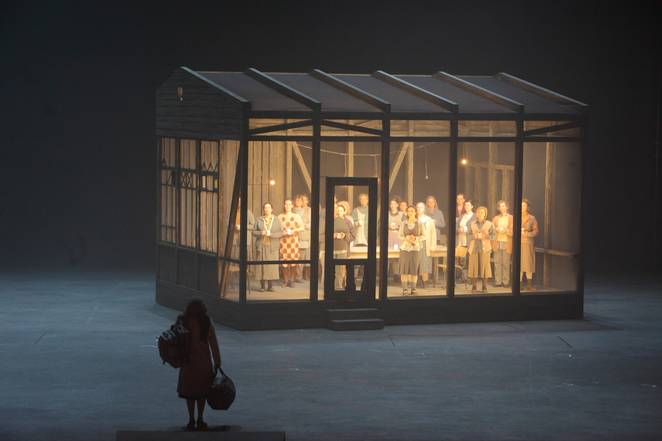Most recently, Mrs. Judith Adam-Caumeil, attorney and partner at the law firm Adam-Caumeil, won a leading case before the highest French court. Adam-Caumeil, specialising in Franco-German business relations, represented the Bayerische Staatsoper (Munich Opera) against Mr. Gilles Bernanos, administrator of the estate of French writer Georges Bernanos. Subject was nothing less than the question of creative freedom.
We talked to Judith Adam-Caumeil to learn more about the case.
Back in 2015, the Munich Opera found itself accused of distortion of an art piece while showing ‘Dialogues of the Carmelites’, a much acclaimed opera in France and all-over Europe. The drama, inspired by ‘The Last on the Scaffold’, a novella by Gertrud von Le Fort, was written by Georges Bernanos, with music and libretto composed by Francis Poulenc. The opera is set during the French Revolution and tells the fictionalised story of the Martyrs of Compiègne, Carmelite nuns, who were guillotined in Paris for refusing to renounce their vocation.
The version of avant-garde director Dimitri Tcherniakov caused great controversy. In specific: the final scene, which was reinvented, showing the nuns in a house intoxicated by a gas leakage. They are saved by Blanche de la Force (Sister Blanche of the Agony of Christ), who solely dies the martyrdom.
This adaption not only provoked great media response but eventually legal action by the successors of Georges Bernanos and Francis Poulenc. The Munich Opera was indicted of distortion of the original art piece. The stop of the performance, as well as the distribution of the merchandised video, was demanded. The successors argued, that “the martyrdom of all nuns by the guillotine was essential and therefore needed to be performed. Otherwise the main message would be changed and the art piece could be misinterpreted.”
“At that time there were already several performances planned, artists signed and everything ongoing,” explains Mrs. Adam-Caumeil. Swift solutions were needed in order to proceed according to playing schedule. The courts, as well as Mrs. Adam-Caumeil, had to look into highly critical questions: Where are the limits to artistic freedom? What defines respect for the work of an artist? How to identify distortion of an art piece? When are the rights of an author infringed?
The courts have rendered opposing decisions in these proceedings since. Mrs. Adam-Caumeil outlines the process for us: “In the first instance, the Paris Court of First Instance dismissed the successors of Poulenc and Bernanos, while the Paris Court of Appeal later ruled that ‘Dimitri Tcherniakov’s production deviates in its final scene from the works of Georges Bernanos and Francis Poulenc (...) and thus infringes the moral rights of authors who are attached to it.’ ”
Now, the highest court ended this controversy by recognising the artistic freedom of staging under French law. This landmark decision represents a “Triumph of Creative Freedom,” says Judith Adam-Caumeil. “The scope of this policy decision is very broad, as it can also be applied to theatre, ballet or cinema”, she emphasises.
The crucial point in the case was the main message. It was Mrs. Adam-Caumeil’s own interpretation, that she pleaded in front of the Supreme Court. In her opinion, Dimitri Tcherniakov’s version is more universal. “Not the guillotine, but the religious aspects are the central message of Georges Bernanos. The nuns lived the martyrdom. The exchange of the guillotine with gas or the number of martyrs do not change the main message. At the end it does not make a difference how or how many died,” she explains. What is more, there is only music, no dialogue, during the final scene. “That is why Tcherniakov could change what happens with the nuns. The music and the text are not changed,” she points out.
Ultimately, the Supreme Court found “Tcherniakov certainly brought his own vision to the original work. (...) The central themes of the work, including that of martyrdom, were respected because the nuns were ready to die, but they were saved at the last minute. Thus, Mr Tcherniakov cannot be blamed for the distortion of the original work.” Moreover the Supreme Court declared “staging is a piece of art itself”. To add authority he even included a reference to the Convention for the Protection of Human Rights and Fundamental Freedoms in his decision.
At large, one can argue the pros and cons of original versions, and equally, the pros and cons of new interpretations. But the importance of preservation of art is out of the question. Preserving matters and new interpretations do not intent to cause any damage to an artists legacy but permit a translation into today’s world. For Mrs. Adam-Caumeil, “the original version has to live to make it universal”.
Photo: © Wilfried Hösl


